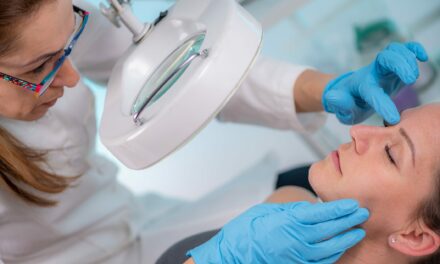Global efforts are underway to create universal dermatology guidelines, aiming to standardize patient care and improve outcomes worldwide.
The globalization of healthcare has brought about a pressing need for universal treatment guidelines, particularly in dermatology. With skin conditions varying widely across different populations and climates, standardizing protocols ensures that patients receive consistent and effective care worldwide.
This article explores the efforts and benefits of international collaboration in developing these guidelines, highlighting the challenges and successes along the way.
The Need for Global Standards in Dermatology

As dermatological conditions can present differently depending on genetic, environmental, and cultural factors, having diverse but standardized protocols is crucial. These guidelines help dermatologists diagnose and treat patients using the most current and effective methods, regardless of location. Standardization also facilitates global research efforts, enabling more comprehensive studies and better data comparisons.
Key Players in International Dermatology Collaboration
Several organizations and entities are at the forefront of this global effort:
- International League of Dermatological Societies (ILDS): ILDS works with national and regional dermatological societies to develop and promote global health initiatives, focusing on standardizing care practices.
- World Health Organization (WHO): WHO’s guidelines and recommendations are instrumental in shaping dermatological practices globally. They provide frameworks that countries can adapt to their specific needs.
- Global Psoriasis Atlas: A collaborative project that collects and standardizes data on psoriasis, helping to create unified treatment protocols for this common and impactful skin condition.
Challenges in Developing Universal Guidelines
Creating universal dermatology guidelines is not without its challenges:
- Diverse Health Systems: Different countries have varying healthcare infrastructures and resources, which can affect the implementation of standardized protocols. A guideline that works in a well-resourced urban hospital may not be feasible in a rural clinic with limited supplies.
- Cultural Variations: Treatment acceptability and practices can differ widely between cultures. For example, the use of certain topical treatments may be more acceptable in some regions than others.
- Research Disparities: There is often a lack of comprehensive data from low- and middle-income countries, which can skew the development of guidelines towards the needs of higher-income regions.
Success Stories of Global Protocol Implementation

Despite these challenges, there have been notable successes in developing and implementing universal dermatology guidelines:
- Psoriasis Treatment: The Global Psoriasis Atlas has significantly advanced the standardization of psoriasis treatment protocols. By collecting data worldwide, it has helped create guidelines that are both comprehensive and adaptable to different healthcare settings.
- Atopic Dermatitis Management: International collaborations have led to the development of widely accepted guidelines for the management of atopic dermatitis, improving patient outcomes globally. These guidelines emphasize patient education, consistent use of emollients, and step-wise pharmacological treatments.
- Teledermatology Protocols: The COVID-19 pandemic accelerated the adoption of teledermatology, leading to the creation of standardized remote care protocols. These guidelines ensure that patients receive consistent care even when face-to-face consultations are not possible.
The Future of Global Dermatology Standards
The future of global dermatology standards lies in continued collaboration and innovation. Here are some key areas to watch:
- Digital Health Integration: Advances in digital health, including AI and telemedicine, will play a significant role in standardizing care. AI can help in developing personalized treatment protocols by analyzing large datasets, while telemedicine ensures these protocols are accessible worldwide.
- Ongoing Research: Continued research and data collection, especially in underrepresented regions, will help refine and expand global guidelines.
- Education and Training: International training programs and workshops will be crucial in ensuring that dermatologists worldwide are equipped to implement standardized protocols effectively.
The development of universal treatment guidelines in dermatology through global collaboration is a significant step toward improving patient care worldwide. By addressing the challenges and leveraging the successes of international efforts, the dermatology community can ensure that patients, regardless of where they are, receive the best possible care.
The continued evolution of these guidelines, supported by advancements in technology and ongoing research, promises a future where dermatological care is both consistent and cutting-edge.
Photo 4404144 © Kasia Biel | Dreamstime.com



